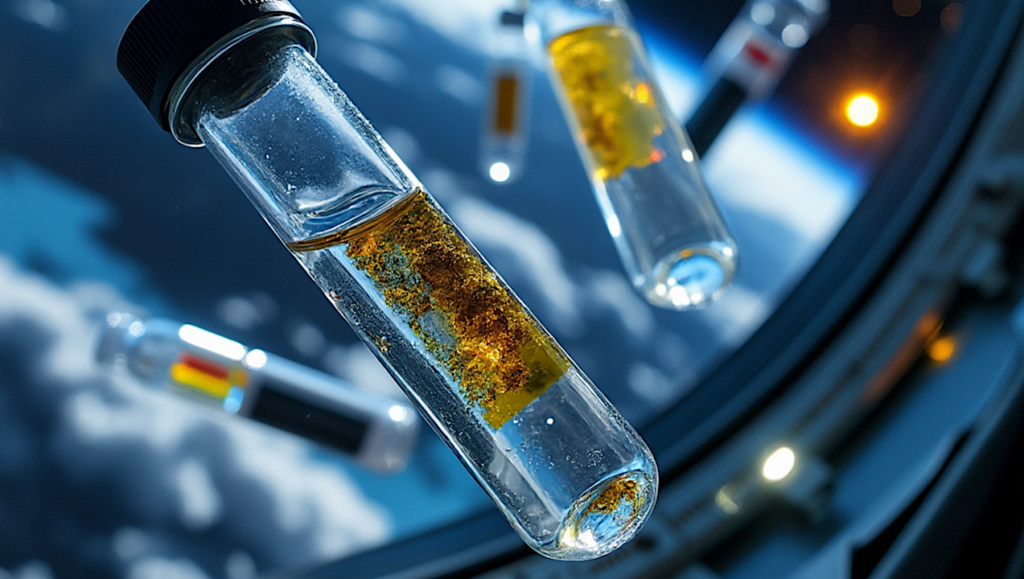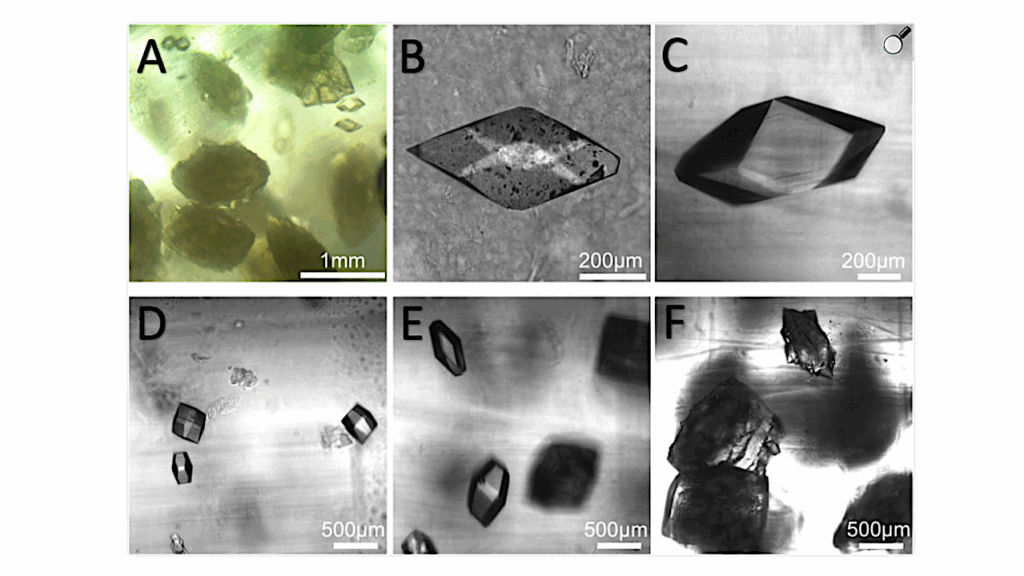NASA Spaceline Current Awareness List #1,155 27 June 2025 (Space Life Science Research Results)

Space Life Science
The abstract in PubMed or at the publisher’s site is linked when available and will open in a new window.
Papers deriving from NASA support:
- He Y, Karanjia R, Zhang X, Wanderer D, Walker E, Lee SH, Poczatek MJ, O’Grady CS, Marion KM, Young M, Moestl S, Mulder E, Stern C, Sadda SR, Laurie SS, Macias BR, Huang AS.Optic Nerve vasculature and countermeasure assessment in a bedrest analogue of spaceflight-associated neuro-ocular syndrome (SANS).Am J Ophthalmol. 2025 Jun 20. Online ahead of print.PIs: S.S. Laurie, B.R. Macias, A.S. HuangNote: Head-down tilt bedrest study. This article may be obtained online without charge.
Journal Impact Factor: 4.3
Funding: “Funding for this work came from NASA (80NSSC20K1034 [AH], NNJ15KK11B [BM], NASA HRP Directed Research [BM], NNJ11ZSA002NA [SSL]) and NIH/NEI (R00EY030942 [MC]; P30EY022589 [UCSD]).” - White BM, Stankovic A, Thoolen S, Kosmyna N, Ivkovic V, Strangman G.Sensory-based alterations and countermeasures in spaceflight and spaceflight analogs.Aerosp Med Hum Perform. 2025 Jul 1;96(7):556-68. Review.PI: G. StrangmanJournal Impact Factor: 0.889
Funding: “This material is based upon work supported by NASA under Award No. 80NSSC21K0669. Any opinions, findings, and conclusions or recommendations expressed in this material are those of the author(s) and do not necessarily reflect the views of the National Aeronautics and Space Administration.” - Goldman C, Kareva T, Sarrafha L, Schuldt BR, Sahasrabudhe A, Ahfeldt T, Blanchard JW.Genetically encoded and modular subcellular organelle probes reveal dysfunction in lysosomes and mitochondria driven by PRKN knockout.iScience. 2025 July 18;28(7):112816.PI: J.W. BlanchardNote: This article may be obtained online without charge.
Journal Impact Factor: 4.6
Funding: “This work has been funded in part with federal funds from NASA under contract #80ARC022CA004 titled ‘Identification of Biomarkers and Pathological Mechanisms via Longitudinal Analysis of Neurological and Cerebrovascular Responses to Neurotoxic Stress Using a Multicellular Integrated Model of the Human Brain.’ This research was funded in whole or in part by Aligning Science Across Parkinson’s (ASAP-024297) through the Michael J. Fox Foundation for Parkinson’s Research (MJFF). For open access, the authors have applied a CC BY public copyright license to all Author Accepted Manuscripts arising from this submission. This work was also supported by funding from the NIH/NINDS (R01NS114239 and UH3NS115064), and the CureAlz Fund. C.G. was supported by funding from the NIH/NIA (T32AG04968) and NIH/NINDS (F31NS13090), and L.S. was supported by the Training Program in Stem Cell Biology fellowship from the New York State Department of Health (NYSTEM-C32561GG).” - Roeder A, Shi Y, Yang S, Abbas M, Sasidharan R, Yanovsky M, Casal J, Ruffel S, von Wirén N, Assmann S, Kinscherf N, Bakshi A, Alptekin B, Gilroy S, SharathKumar M, Prat S, Argueso C.Translational insights into abiotic interactions: From Arabidopsis to crop plants.The Plant Cell. 2025 Jun 21. Online ahead of print.PI: S. GilroyNote: This article may be obtained online without charge.
Journal Impact Factor: 11.6
Funding: “…Research in the Gilroy laboratory is supported by NASA Space Biology: 80NSSC19K0126, 80NSSC21K0577, 80NSSC23K0380, and 80NSSC24K0705. …” - Vegunta B, Lui C, Kim M, Tran J, Papez M, Ramasubramanian AK, Lee SJ.Orientation-independent bubble trap with internal partition for robust operation of microfluidic systems.Lab Chip. 2025 Jun 23. Online ahead of print.PI: A.K. RamasubramanianNote: This article may be obtained online without charge.
Journal Impact Factor: 5.4
Funding: “Funding was made available by NASA Space Biology grant # 80NSSC21K0272.” - Manchel A, Erdemir A, Mulugeta L, Ku JP, Rego BV, Horner M, Lytton WW, Myers JG, Vadigepalli R.A rubric for assessing conformance to the Ten Rules for credible practice of modeling and simulation in healthcare.PLoS One. 2025 Jun 25;20(6):e0313711.Note: This article may be obtained online without charge.
Journal Impact Factor: Not available for this journal.
Funding: J.G. Myers is affiliated with NASA Glenn Research Center.
Other papers of interest:
- Lee R, Ong J, Sampige R, Panzo N, Memon H, Suh A, Waisberg E, Mader T, Berdahl J, Chévez-Barrios P, Lee AG.Corneal edema and the endothelium in spaceflight.Aerosp Med Hum Perform. 2025 Jul 1;96(7):569-77. Review.
- Farooq H, Liang X, Qiu W, Dang K, Jiang S, Qian A.Chapter 7 – Space physiology.In: Qian A-R, Lin X, Patil S, Farooq HMU, eds. Space Biology and Space Biotechnology: Academic Press, 2025. p. 111-23.
- Hao W, Yun C, Patil S, Qiu W, Qian A, Lin X.Chapter 5 – Space molecular cell biology.In: Qian A-R, Lin X, Patil S, Farooq HMU, eds. Space Biology and Space Biotechnology: Academic Press, 2025. p. 87-98.
- Shi D, Yun C, Patil S, Qiu W, Qian A, Lin X.Chapter 6 – Space developmental biology.In: Qian A-R, Lin X, Patil S, Farooq HMU, eds. Space Biology and Space Biotechnology: Academic Press, 2025. p. 99-109.
- Skotnicky P, Mondal SR.Minds in microgravity: The psychological journey of space travelers.In: Mondal SR, Vrana V, Das S, eds. Pioneering the New Space Economy through AI and Immersive Technologies: Economic Development and Tourism Opportunities in Space. Singapore: Springer Nature Singapore, 2025. p. 239-60.
- Tafforin C, Tognini M.Human and space ethology as a methodology-based solution for interdisciplinary research.Front Physiol. 2025 Jun 26;16:1599005.Note: This article is part of Research Topic “Innovations in Tools and Methods for Life Sciences Research in Space” (https://www.frontiersin.org/research-topics/68978/innovations-in-tools-and-methods-for-life-sciences-research-in-space). Additional articles will be forthcoming and may be found in the link to the Special Issue. This article may be obtained online without charge.
- Chen D, Cui J, Zhao L, Xin P, Yan S, Degermendzhi AG, Fu Y, Liu H.CeO2 nanomaterial regulates wheat endophytic and rhizospheric bacteria to enhance resistance under simulated microgravity stress.npj Microgravity. 2025 Jun 23;11:27.Note: A random positioning machine was used in this study to simulate microgravity. This article may be obtained online without charge.
- Devecchi V, Arvanitidis M, Falla D.Effects of microgravity on neuromuscular control of the spine: A protocol for a systematic review and meta-analysis.BMJ Open. 2025 Jun 20;15(6):e098172.Note: From the Introduction: “As spaceflight missions become more frequent and prolonged, the effects of microgravity on the musculoskeletal system represent a critical concern for astronauts’ health given their increased risk of spinal pain and injury. A better understanding of the adaptations induced by microgravity on neuromuscular control of the spine is essential to guide the development of effective countermeasures. Thus, this systematic review will aim to investigate the effects of microgravity on the neuromuscular control of the spine.” This article may be obtained online without charge.
- Ding Y, Xu Y, Wang X, Zhang M, Zeng Q, Yan C, Zhou G, Hu W.Microgravity alleviates low-dose radiation-induced non-targeted carcinogenic effects.npj Microgravity. 2025 Jun 17;11:26.Note: A a 3D clinostat was used in this study to simulate microgravity. This article may be obtained online without charge.
- Mayor I, Lindgaard K, Harandi B, Stensballe J, Mølgaard J.Exploring microgravity-induced changes to the coagulation system using thrombelastograph – A topical review.Life Sci Space Res. 2025 Jun 19. Review. Online ahead of print.
- Schmidt SV, Odainic A, Aretz B, Frings-Meuthen P, Hoenemann J, Bohmeier M, Liemersdorf C, Mulder E, Moestl S, Heusser K, Tank J, Jordan J, de Boni L.Alterations in CNS-derived blood biomarkers during 30 days simulated microgravity.Front Physiol. 2025 Jun 23;16:1600708.Note: From the abstract: “Forty participants (18 women, 22 men; mean age ∼36 years) were assigned to different countermeasure groups: lower body negative pressure (LBNP), cycling in HDT followed by wearing thigh cuffs, upright sitting (positive control), and HDTBR without countermeasures. Neurological exams and blood biomarker analyses (SIMOA Quanterix) were performed to assess NfL, GFAP, Aβ40, Aβ42, and total tau.” This article may be obtained online without charge.
- Singh VK, Wise SY, Fatanmi OO, Petrus SA, Melendez-Miranda I, Carpenter AD, Lee SH, Seed TM.Comparative study of pathology of various organs of rhesus and cynomolgus nonhuman primates exposed to two different doses of acute total-body radiation.Radiat Res. 2025 Jun 16. Online ahead of print.
- Shykoff BE, French DC, Warkander DE, Robinson FE.Safety pressure effects in a mechanical demand regulator.Aerosp Med Hum Perform. 2025 Jul 1;96(7):547-55.Note: From the abstract: “Most U.S. Navy, but few U.S. Air Force, tactical jets use safety pressure (SP) regulators. SP effects have been studied only with confounding differences in regulator design. We compared a CRU-103 SP regulator to a CRU-103 with SP removed. The hypothesis was that SP does not alter breathing, only shifts pressure more positive.”
- Simons R, Maher D, Vermeiren R, Wagstaff AS.Aeromedical concerns about extended minimum crew operations.Aerosp Med Hum Perform. 2025 Jul 1;96(7):590-2.
- Tornero-Aguilera J, Martin-Gomez F, Martinez-Taranilla M, Rubio-Zarapuz A, Martín‐Rodríguez A, Clemente-Suárez VJ.Can a weekend of controlled hypoxia restore hormonal balance? A novel approach to stress recovery in aviation professionals.Front Physiol. 2025 Jun 26;16:1582591.Note: This article may be obtained online without charge.
- Dillard T, Kelkar P, Chari N, Erk KA, Kappes M, Guo Z.Mechanical response of avian skeletal muscle under quasi-static and dynamic uniaxial compression.J Mech Behav Biomed Mater. 2025 Oct;170:107103.
- Wang Y, Guo J, Tang H, Tian Q.Convex wrapping description of biarticular hip muscles for patient-specific musculoskeletal modeling.J Biomech. 2025 Aug;189:112802.Note: This article is a short communication.
- Marotta D, Ward N, Bauer SR, Hunsberger J, Stoudemire J, Savin K, Giulianotti M, Jamieson CHM, Roberts D, Roberts M.Biomanufacturing in low Earth orbit: A paradigm shift.Stem Cell Reports. 2025 Jun 19;102536. Review. Online ahead of print.Note: This article may be obtained online without charge.
- Lee SS, Liu Q, Cheng AHR, Kim DW, Boudreau DM, Mehta A, Keles MF, Fejfer R, Palmer I, Park KH, Münzberg H, Harris TD, Graves AR, Blackshaw S, Wu MN.Sleep need-dependent plasticity of a thalamic circuit promotes homeostatic recovery sleep.Science. 2025 Jun 19;388(6753):eadm8203.
Astrobiology, space biology, space life science, space medicine, Microgravity, ISS,








